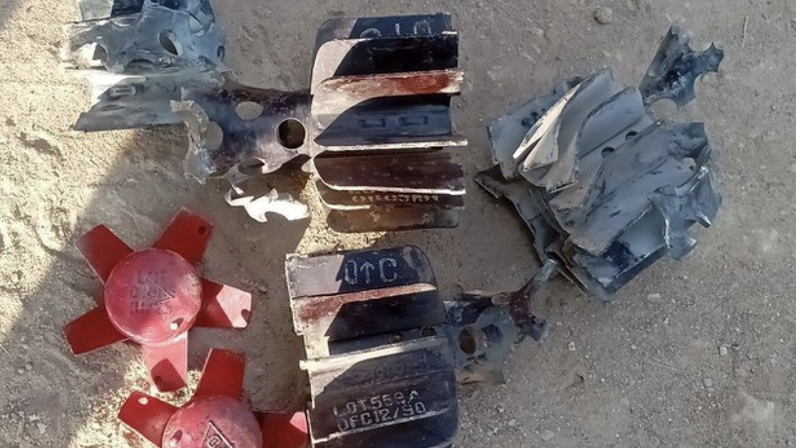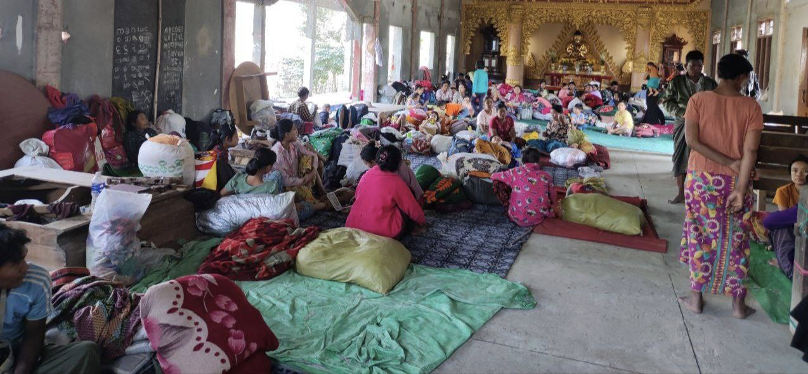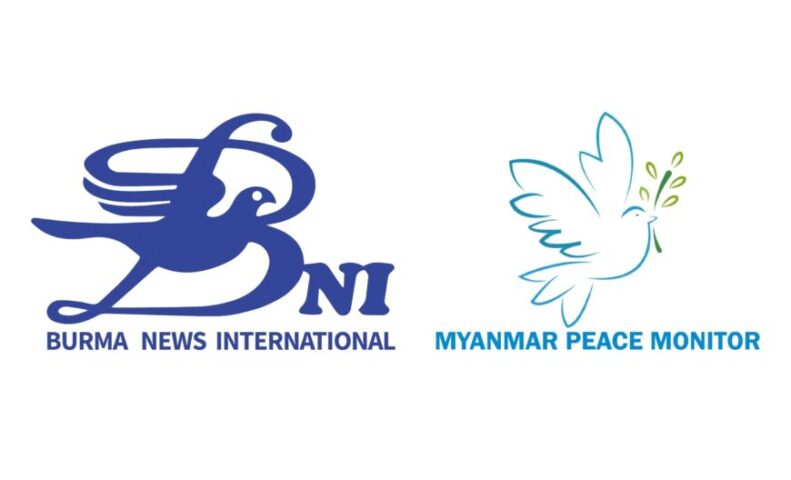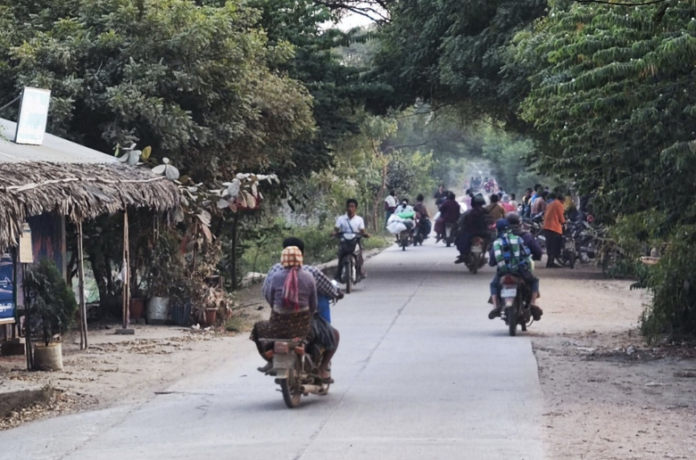An interview with a local woman from ChaungU, about the current situation in ChaungU Township, including the challenges posed by airstrikes, shelling, and paramortar attacks, as well as the condition of the internally displaced persons (IDPs) in the area.
Since 12 February, the military council has been launching aerial bombings and heavy shelling in Monywa and ChaungU Townships in Sagaing Region. Additionally, paramotor attacks are being carried out daily.
As a result of the airstrikes and paramotor attacks, junta troops have been raiding and firing on villages in ChaungU Township, leading to an increase in the number of displaced people.
Shanni Voice interviewed a local woman from ChaungU, who requested to remain anonymous for security reasons, about the current situation in ChaungU Township facing airstrikes, heavy shelling, and paramotor attacks, alongside the challenges faced by internally displaced persons (IDPs).
Q: Pls tell us about the junta’s aerial bombing in ChaungU Township.
A: On 12 February, the junta dropped bombs on Shan Htoo and Kalargyi in ChaungU Township, resulting in the deaths of three people, including two children and an adult from an IDP camp. The victims included a five-year-old girl and her eight-year-old sister, who were both killed in the bombing. Around four others were injured. Later, on 17 February, the junta carried out two bombings at night, at 8:24 PM and 8:34 PM. There have been no reports of casualties from these attacks so far. The junta also dropped bombs on Mae Thae Kyo near ChaungU. Additionally, an airstrike was carried out on 12 February, followed by paramotor attacks on 13 February. A 53-year-old woman from Nyaung Bin Thar in ChaungU Township was killed, and a child from Monywa Township also lost their life in the attacks.
Q: Is this the first time the junta has used paramotors to drop bombs in ChaungU? Did the locals receive any early warning about the paramotor attacks, and is there an early warning system in place in the region?
A: This is the first paramotor attack in the region. The locals did not receive any prior warning about the arrival of the paramotors. Family members of revolutionary forces with intercoms are able to get information when paramotors are coming from the Northwest Command in Monywa to ChaungU. However, most people only become aware of the paramotors when they hear their sounds.
Once you hear the sound, there’s no time to run. The bomb-dropping and the explosion happen almost simultaneously. On the night of 17 February, around midnight, a paramotor was flying overhead, but it was heading toward ChaungU. Earlier, at around 8:30 PM, the junta had dropped bombs twice using a jet fighter. Later that night, a bomb was dropped once again by a paramotor. Since then, we frequently hear the sounds of jet fighters.
Q: Is there a regional airstrike warning system and knowledge dissemination in ChaungU?
A: Both the NUG and strike committees are working to spread information about airstrikes, but their reach is still limited. Currently, all roads in ChaungU are blocked, and airstrikes are the main threat. Paramotors have been flying for three consecutive days, dropping bombs wherever they choose, but they return without dropping anything if they decide not to strike. Due to ChaungU’s proximity to Monywa, paramotors have been targeting the area for several days in a row. While information about the paramotors has recently been shared online, there is still a lack of widespread knowledge dissemination. The strike committees disseminate knowledge using projectors about the types of jet fighters, their capabilities, how to seek shelter in bomb shelters, crouching in lower areas when shelters are inaccessible, and how to identify flight patterns and heavy shelling.

Q: Following the announcement by the ChaungU PDF to close the Monywa-Mandalay road and the ChaungU-Pakokku road in ChaungU Township, what are the current military activities in the area?
A: The current military activity involves ongoing battles aimed at capturing the camp in Kin Mon Taw Pyu Saw Htee village. Yesterday, the military council carried out raids and fired heavy shells. Between 5-6 PM, a heavy shell struck Taw Kyaung Lay village, killing a woman. The military council’s raids are a result of the battle for control of the camp.
Military columns coming from Monywa are heading toward Kyi Kone, Inma, and then proceeding to Kin Min Taw village (Pyu Saw Htee village). The military council has also advanced from ChaungU, but I heard that some columns have since withdrawn. However, military tension remains high in the area. Revolutionary forces continue to maintain their presence there. The roads have been closed due to the military’s advance, and there are reports of houses being burned in Kyi Kone village. As a result, many people have been forced to flee. A large number of people from both Monywa and ChaungU Townships have escaped the area.
Q: What is the current situation of IDPs sheltering along Monywa-ChaungU road?
A: Most of the internally displaced persons (IDPs) are sheltering in monasteries, with some monasteries housing between 250-300 IDPs. The monasteries with fewer IDPs still host around 70. IDPs from Kyi Kone have not yet been able to flee to safer locations. Many IDPs are also located between A Myint and Nyaung Phyu Bin, as well as those displaced from Ta Let Gyi and Kin Pun Chaung. Ma Lone Tin and Mahti Thar also have a large number of IDPs. The displaced individuals come from both sides of the conflict.

Q: What health and livelihood challenges are the IDPs facing?
A: Monasteries initially provide food, but when they are unable to continue, the IDPs must cook for themselves. While some monasteries continue to provide food, IDPs in other monasteries have to rely on preparing their own meals. NGOs distribute rice and oil to help. However, there is no clinic available to provide medical care. With so many displaced people, health challenges are increasing. Recently, a monk suffering from diarrhea was searching for a clinic or hospital. The day after the aerial bombing, many cases were reported at the hospital, including leg injuries, facial wounds, and some legs requiring amputation. These injuries are the direct result of the airstrikes.
Medical treatment is extremely difficult to access. It’s nearly impossible for medical staff to reach the IDP camps for treatment. Hospitals are bearing the medical expenses, as the IDPs are unable to afford to pay. Both the hospitals and the displaced people are facing significant shortages. The IDPs are in urgent need of medicine and financial support for medical costs. It would be ideal if people could provide medicine to help meet these needs.
Q: Is there anything else you would like to add?
A: It would be much more convenient for the IDPs if clinics were opened, as they are suffering greatly. The mental harm they are experiencing now is far worse than before. When we visited the IDP camps to distribute oil and rice, many of the displaced people told us they felt unimportant and suggested that donations should go to the PDF members and those fighting. Now, they find it difficult to even flee. While they are grateful for the rice and oil distribution, medical treatment would be incredibly beneficial. The elderly and children, in particular, are suffering from the cold due to displacement. It’s heartbreaking to see some displaced children eating rice early in the morning. I also feel a deep sense of pity when I hear them say, “I am hungry,” or “No, I’m not hungry.”
Commodity prices are soaring, and they must spend around Ks 10,000 for motorbike fuel just to reach places where they can get food and vegetables. Without this, they won’t be able to access the essentials. It is difficult for farmers to come up with Ks 10,000 in this current situation.
Farmers are unable to do their farming, and there are no employment opportunities available. For the IDPs, displacement will only be manageable if they have money. While monasteries provide food, many displaced people have flocked to those that offer assistance, with around 200-300 IDPs seeking refuge. However, the monasteries are unable to provide breakfast for all of them. It’s heartbreaking to hear children say they’re not hungry, even though they are clearly suffering from hunger.
It’s no longer the way it should be; we’re just doing the best we can. In the past, when rice and oil were distributed at the IDP camps, the displaced people expressed that receiving rice and oil wasn’t a priority for them. What mattered more were the families of the revolutionary forces. The opening of hospitals and clinics is a positive development. Providing medical expenses for those seriously injured is also beneficial. Covering medical costs at the hospital is much more convenient.
Sent by Shanni voice

